TRACKSIDE PERFORMANCE ANALYSIS: The big braking point at high-speed Silverstone

To understand the subtleties of car performance and driver technique, there’s no substitute for standing trackside and watching (and listening to) the protagonists at work. Silverstone may be renowned for its high-speed corners, but actually it’s in the slow stuff that the drivers can find most time. For FP1 in Britain, Mark Hughes ventured to the Turn 3 – better known as Village – to watch the drivers stand on the anchors…
The tight right-hander named Village introduces the cars into the twisty ‘arena’ section of Silverstone, and features one of the most spectacular approaches on the calendar thanks to the combination of heavy braking, heavy fuel loads and magnesium skid blocks. A liquid-like stream of sparks spills from behind the cars as the drivers stand on the brakes, particularly the Red Bulls and Mercs.
The key challenge for the driver from high speed to very low is in coming off the brakes at just the right moment to not lose any unnecessary momentum - particularly tricky in the early low-grip laps. Until the grip comes up, some drivers – notably Kimi Raikkonen – are very conservative, staying on the brakes until further into the turn than the car could actually accept.
A liquid-like stream of sparks spills from behind the cars as the drivers stand on the brakes
But gradually a line on the new tarmac goes down, the tyres begin generating some heat and before you know it drivers are sawing away at the wheel on the exit, trying to scrub off the excess speed the grip has encouraged them to take. You can actually see their confidence spiraling upwards by the lap. Then it’s a case of how early and hard you can get on the gas for the short acceleration zone down to Turn 4.
Early on the pace is Pierre Gasly (who ends the session quickest) and the Red Bull is the only car that looks to have comparable entry speed to the two Mercs. Both Lewis Hamilton and Valtteri Bottas are able to get earlier and harder on the throttle, their car clearly better balanced at that exit phase of the corner - but it's Gasly who ends up with the quickest overall time through the corner (as shown in the video above).
The Ferrari doesn’t have quite the entry speed of either of those cars but Charles Leclerc is perhaps doing the smoothest job of all, seamlessly melding the braking and acceleration phases of the corner, rivalled only by Hamilton.
Charles Leclerc is doing the smoothest job of all, seamlessly melding the braking and acceleration phases of the corner
The other stand-out car here is the McLaren. It lacks the grip of the top cars, but its slides carry so little momentum that there’s relatively little risk for Lando Norris as he takes in a little excess speed. It scrubs off even before the corner exit and he’s as early on the gas as Hamilton – albeit from a visibly lower minimum speed. Carlos Sainz is more Leclerc-like in his approach here, feeling the car rather than reacting to it – but it appears to be a car amenable to either approach, with a wide operating window.
A big black cloud appears out of nowhere right above the corner only about half-way through the session. The air suddenly cools – and the first light drops begin to fall. Romain Grosjean has just pitted for a new nose for the Haas after a cold tyre mishap on the pit exit. Out he comes on his soft slicks, still stone cold. He’s got virtually no grip through Village, arms flailing to correct the slides. He spins three corners later.
The best of the dry track running is done for now...
Next Up
Related Articles
 ‘I have achieved my dream, that little boy's dream’ – Norris
‘I have achieved my dream, that little boy's dream’ – Norris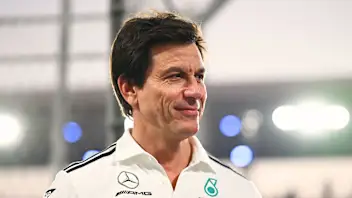 Wolff calls Abu Dhabi ‘mediocre’ but ‘pleased’ to finish P2
Wolff calls Abu Dhabi ‘mediocre’ but ‘pleased’ to finish P2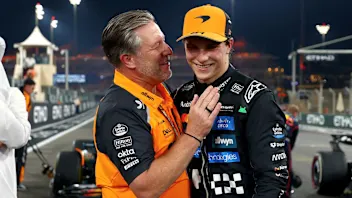 Piastri ‘should be proud’ of his season says Brown
Piastri ‘should be proud’ of his season says Brown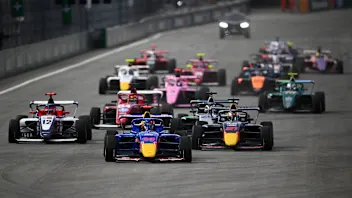 F1 ACADEMY unveils calendar for 2026 season
F1 ACADEMY unveils calendar for 2026 season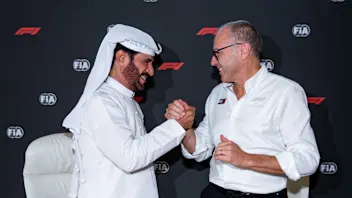 F1, the FIA and 11 teams sign 2026 Concorde Agreement
F1, the FIA and 11 teams sign 2026 Concorde Agreement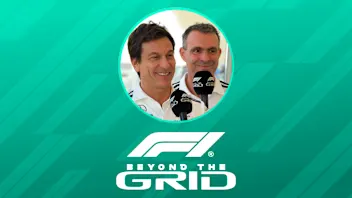 Beyond The GridToto Wolff and Hywel Thomas on Mercedes’ 2026 prospects
Beyond The GridToto Wolff and Hywel Thomas on Mercedes’ 2026 prospects